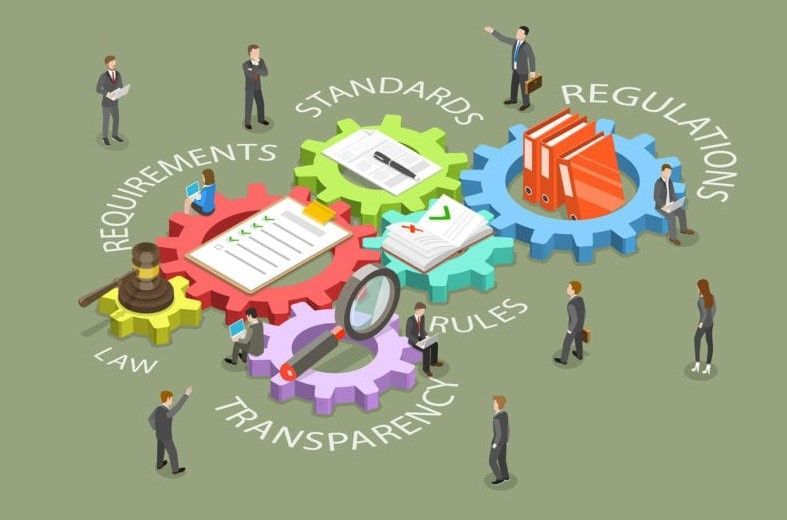Your Company and Jurassic Park
August 14, 2025
Why success or failure depends on finding chaos in our companies before it finds us.
Q:
What does your company share with Jurassic Park?
A:
A make-or-break potential for chaos.
In the original Jurassic Park movie , the character played by Jeff Goldblum (Ian Malcolm) immediately identified the enterprise as “an accident waiting to happen.” An expert in chaos theory, he was brought in to answer the question: “What could go wrong?”
Plenty, of course, something that didn’t change for three more Jurassic movies over 20 years, including this summer’s Jurassic World. No one listens to dire predictions in the movies, for obvious reasons.
But in business, we must listen. More important, like Jurassic Park’s scientist-entrepreneur-founder, we must seek out the chaos lurking in our companies. What to look for? One clear warning sign is fighting too many fires on too many fronts , especially in sales and in ways that affect revenue.
The three most important words used side by side with revenue are generation , margin , and retention.
- The lifeblood of any business is revenue generation.
- But not all revenue is good revenue. It has to produce sufficient margin.
- Retaining revenue sources year after year-revenue retention-minimizes the amount growth that must come from new accounts.
What can go wrong? Again, plenty, but solutions are easier than corralling runaway T-Rexes. Nonetheless, survival can still be the name of the game.
For example, if fast growth is overwhelming a sales force’s ability to satisfy and retain customers, chaos does in fact show up as firefighting. Unfortunately, fighting fires doesn’t always put them out. Worse, reacting like a pinball to customer issues steals time from actively penetrating existing accounts or winning new ones. Costly misperceptions occur: “If we can hire just one more person or work overtime or increase training, our troubles will be over.”
In our experience, it doesn’t work that way.
We see chaos predominantly in two distinct contexts:
- When a company is falling fast and struggling to survive.
- When a company is soaring and on its way to achieving its full potential.
Falling Fast: Chaos exists because the company, in fact, requires a turnaround. Operations are not efficient, resources and goals are out of alignment, and the company is fighting for survival. Sales are most likely in a nose dive due to poor product or service offerings, poor quality, delivery, or other issues.
Soaring: Chaos exists because of extraordinary growth. Revenue is growing faster than talent and processes can accommodate. The company and its people can no longer walk the talk of their brand. They’re consumed with firefighting, and they risk losing the growth they worked so hard to achieve. They must eliminate the chaos to achieve their full potential year after year.
We are not turnaround experts so we generally avoid companies in free-fall chaos. We do experience a fair number of companies that are in chaos from flying too close to the sun. Sometimes, they were in chaos before we arrive. Other times, they simply weren’t prepared for the growth that followed some of the services we provided.
In our experience there are typically two gaps that must be addressed: people and process.
People: The people gap is usually more complicated than just being understaffed by one or two or even a few people. No staffing model correlates to the real growth rate, and that can prevent human resource needs to be anticipated and addressed before they are required. In football terms the company out kicks its coverage. Critical skills were on target for a company of one size, but fell behind with rapid growth.
Process: Usually, the gap here is that company processes are out of alignment with company goals. On the revenue side, symptoms can be salespeople bringing in work that does not fit the target profile, has insufficient margins, or requires capabilities the company doesn’t have. Chaos fills the vacuum created by too few or ineffective controls. Symptoms also appear when operations are not in alignment with the company’s promise to its customers. Some portion of the projected brand image is not being served or delivered.
If staffing is falling behind, if your people are firefighting, if growth seems to be resulting in less, not more profitability, you may be experiencing a positive form of chaos. To keep positive chaos from turning negative, however, requires bringing your people and processes into alignment. Unfortunately, whether in free fall or flying high, few companies have in-house expertise or resources to address that challenge.
We’ve successfully matched our clients to individuals and firms experienced in scaling companies while minimizing chaos. Much of the solution has to do with the ability to determine staffing levels. But hiring the right people during growth periods can also be especially difficult, in part because of the speed with which such decisions must be made. Developing an ever-improving profile of who will have the greatest opportunity for success in your company becomes crucial. The good news is that advances in behavioral science and neuroscience have produced tools and models that can lead to truly remarkable hiring successes.
Three years ago, for example, a company on a steep growth curve was firefighting in several areas and experiencing the “people chaos” that came with such rapid success. We teamed up with a consultant we often work with and an approach that reduced that chaos significantly was applied. Company execs “now have virtually no anxiety about who to hire, when, how, and why,” the consultant reports, “even with 300 percent growth.” The new approach impacted the entire company and is setting the stage for even greater growth in the future. Firefighting has become rare.
Similarly, in sales, we know that a customized sales process allows for proactivity but gets current salespeople headed in the same direction and gets new salespeople up to speed quickly. More efficiency leads to more effectiveness.
We, and others we know and trust, can help you review the assumptions behind your growth objectives to determine if they are realistic in light of your staffing and processes-not just in one area but across the board if necessary. Then, if needed, proven processes can be implemented to support and manage your growth.
Learn more about spotting revenue-damaging chaos before it spots you and what to do about it. Contact us pkrone@productivestrategies.com or 847-446-0008, Extension #1.
The post Your Company and Jurassic Park appeared first on Productive Strategies, Inc..










